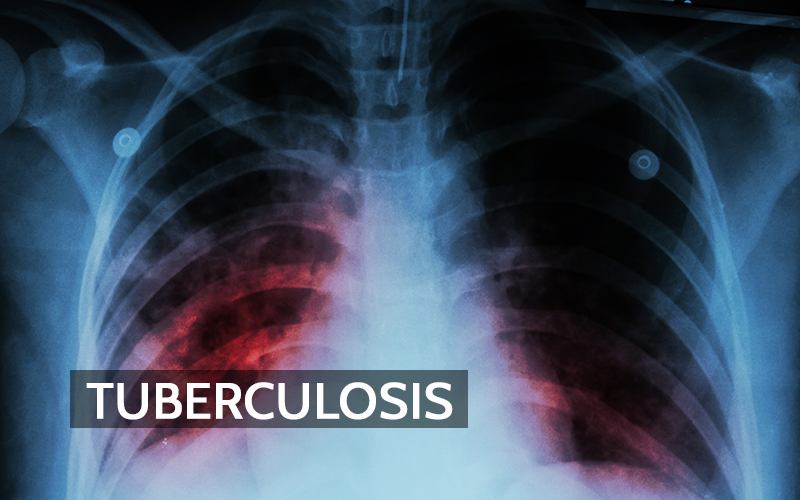Tuberculosis (TB) remains a significant public health concern worldwide, including in the United States. This article delves into the causes, prevalence, transmission mechanisms, historical context within the U.S., and the nation’s detection and monitoring strategies.
What Causes Tuberculosis
TB is caused by the bacterium Mycobacterium tuberculosis. When an individual with active pulmonary TB coughs, sneezes, or speaks they release microscopic water droplets containing the bacteria into the air. Inhaling these droplets can lead to infection. Notably, TB primarily affects the lungs but can also impact other organs like the kidneys and brain, leading to a range of different symptoms depending severity of infection1.
How is Tuberculosis Transmitted
TB spreads through airborne transmission. When a person with active TB disease expels bacteria into the air, others nearby can inhale these bacteria and become infected. Factors influencing transmission include the infectiousness of the individual, environmental conditions, duration of exposure, and the immune status of the exposed person. It’s important to note that individuals with latent TB infection do not transmit the disease; only those with active TB are contagious.
Tuberculosis Prevalence
Globally, TB remains a leading cause of death from infectious diseases. In 2023, the World Health Organization (WHO) reported that TB had overtaken COVID-19 as the top infectious disease killer, with approximately 1.25 million deaths and an estimated 10.8 million new cases2. This resurgence underscores the ongoing challenges in TB control efforts.
In the United States, TB incidence has fluctuated over the years. In 2022, the Centers for Disease Control and Prevention (CDC) reported 8,331 TB cases, equating to a rate of 2.5 cases per 100,000 persons3. However, 2023 saw a significant increase, with over 9,600 reported cases—a 16% rise from the previous year and the highest since 20134. This uptick is partly attributed to increased international travel and migration, as well as the lingering effects of the COVID-19 pandemic on healthcare systems.
A Bit of Historical Context for Tuberculosis in the United States
TB has a long history in the U.S., once being a leading cause of death in the late 19th and early 20th centuries. The advent of antibiotics and public health interventions led to a significant decline in cases throughout the 20th century. However, the 1980s witnessed a resurgence, largely due to the HIV/AIDS epidemic, which compromised immune systems and increased susceptibility to TB. Concerted public health efforts, including the implementation of directly observed therapy (DOT) and improved diagnostic methods, subsequently led to a decline in cases. Yet, recent trends indicate a need for renewed vigilance5.
Detection and Monitoring Programs in the United States
The U.S. employs comprehensive strategies to detect and monitor TB, aiming to prevent transmission and manage cases effectively. Key components include:
- Surveillance Systems: The National Tuberculosis Surveillance System (NTSS) collects data on TB cases nationwide, enabling the CDC to monitor trends, identify outbreaks, and allocate resources appropriately3.
- Screening Programs: Targeted testing is conducted among high-risk populations, such as individuals with HIV, recent immigrants from countries with high TB prevalence, and those in congregate settings like prisons and shelters. Screening methods include the tuberculin skin test (TST) and interferon-gamma release assays (IGRAs).
- Genotyping and Molecular Surveillance: The CDC’s National Tuberculosis Genotyping Service (NTGS) analyzes TB strains to identify transmission patterns and detect outbreaks. In 2018, the CDC established the National Tuberculosis Molecular Surveillance Center (NTMSC) to perform whole-genome sequencing on TB isolates, enhancing the understanding of transmission dynamics3.
- Contact Investigations: Health departments conduct thorough investigations to identify and test individuals who have been in close contact with TB patients, ensuring early detection and treatment of latent or active TB.
- Treatment Programs: The U.S. follows standardized treatment protocols, often involving multiple antibiotics over an extended period. Directly observed therapy (DOT) is employed to ensure adherence, reducing the risk of drug resistance.
Challenges and Future Directions
Despite robust detection and monitoring programs, TB control in the U.S. faces challenges. The rise in drug-resistant TB strains poses a significant threat, necessitating the development of new diagnostics, treatments, and vaccines. Additionally, social determinants of health, such as housing instability and access to healthcare, impact TB transmission and outcomes.
The COVID-19 pandemic has further complicated TB control efforts. Disruptions in healthcare services have led to delays in diagnosis and treatment, contributing to the recent increase in cases. Addressing these challenges requires sustained investment in public health infrastructure, research, and community engagement.
Tuberculosis continues to be a public health challenge in the United States. Understanding its causes, transmission, and historical context is crucial for effective control. The nation’s detection and monitoring programs are comprehensive, yet evolving challenges demand ongoing vigilance and adaptation. Through coordinated efforts, it is possible to reduce TB incidence and move closer to the goal of elimination.
Related Stories:
The Importance of Monitoring Ultrafine Particles


